Does it snow in Spain?
The Southern European country of Spain is somewhere you’re more likely to associated with sunny weather rather than freezing winter weather.
But while most of the country has milder winters than elsewhere in Europe, that doesn’t mean that lots of snow is an impossibility!
In fact, parts of Spain, largely in the north and central areas of the country, are very mountainous.
And we know what mountains mean – more snow! There are even some excellent ski resorts in parts of the country.
That said, I’ve been to Spain in winter countless times, and I’ve only found snow when I’ve sought it out.
So, I’ve put together this blog post to demonstrate exactly where and when to expect cold weather – and perhaps snow – in Spain!
Does it snow in Spain?
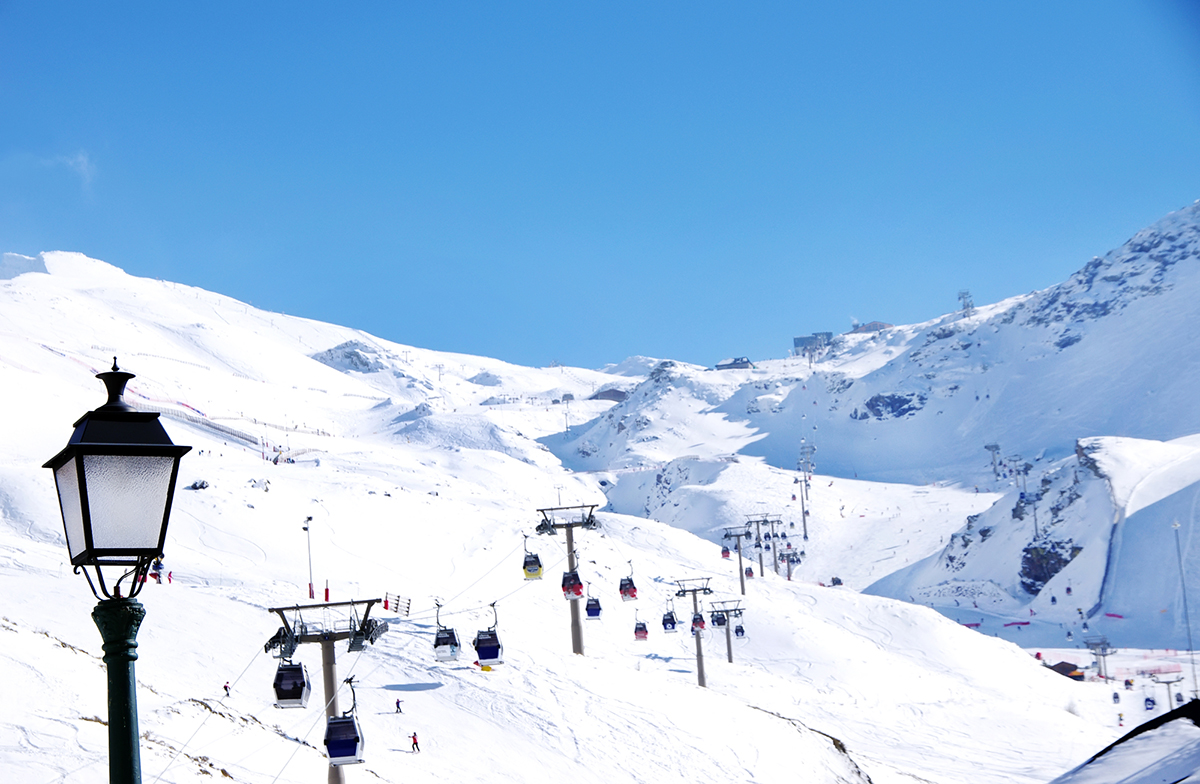
Yes, it does snow in Spain in the winter months, but the frequency and intensity depend on where exactly you are!
Thanks to its Southern European location, most places in Spain have mild winters.
BUT, if you’re after guaranteed snow, there are places that have lower average temperatures – and subsequently, more snow!
If you’re visiting coastal cities like Barcelona or Valencia, don’t expect snow – it often makes headlines when it does happen! Winter conditions in these places range from mild to warm temperatures.
Contrast this with Spanish regions like the Pyrenees, where snowfall is common, and you might get the idea of how varied Spain’s climate is, thanks to its range of topography and weather patterns.
When does it snow in Spain?
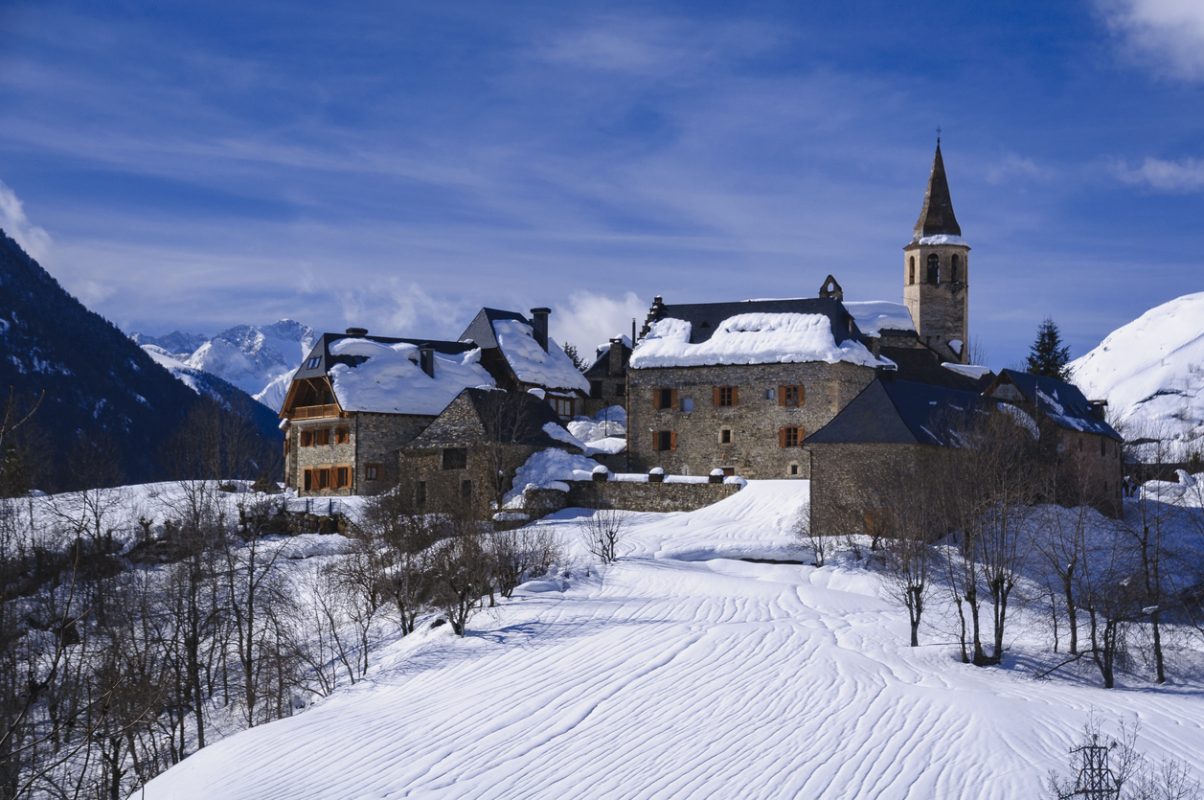
Spain usually has hot summers and mild winters. So when exactly does it snow in Spain?
Snowfall in Spain is largely a seasonal affair, typically gracing the country during the winter months from November through March.
The frequency and volume of snow vary based on the region and specific weather patterns for the year. Let’s break it down by month to help you plan your winter trip to Spain.
Does it snow in Spain in November?
Snow in November is fairly uncommon in most parts of Spain.
However, in the Pyrenees and higher elevations, you may start to see a dusting of snow toward the end of the month.
It’s the beginning of the winter season, and locals in these areas know to prepare for the cold months ahead!
Does it snow in Spain in December?
As the calendar flips to December, the chances of snow increase, particularly in the north and in mountainous areas.
But in cities like Barcelona and Malaga, snow is still virtually an impossibility.
Cities like Madrid might see an occasional snow flurry, but it’s not a guarantee.
If you’re dreaming of a white Christmas in Spain, heading to the Pyrenees is your best bet – I had a lovely trip to Vielha in the Valle de Arán just before Christmas a few years ago!
Does it snow in Spain in January?
January is the coldest month in Spain, and snow is more likely, especially in regions like the Pyrenees, Central Spain, and even parts of Andalucia.
While coastal cities usually stay snow-free, January can bring surprises!
Keep an eye on the weather forecast if you’re planning to travel around this time.
Does it snow in Spain in February?
Winter snowfall continues in some areas in Spain in February – although it’s generally lighter compared to January.
Ski resorts in the Pyrenees are in full swing, and other regions may see sporadic snowfall.
Again, the south tends to stay warmer, but it’s not impossible for flurries to reach there too!
Does it snow in Spain in March?
By March, Spain is starting to thaw, but snow can still fall, particularly in elevated regions.
It’s a transitional month, so if you’re not a fan of extreme cold but still want to catch some Spanish snow in the mountains, March might be the month for you!
Why does it snow in Spain?
Snowfall in Spain is a complex interplay of several factors, including altitude, geographical features, and oceanic influences.
Altitude
Higher elevations are more prone to snowfall – altitude provides cooler temperatures, making it easier for snow to form and stick.
This is why the Pyrenees and other mountainous regions like the Sierra Nevada in Andalucia experience regular snow.
Geographical Features
Spain is a country of varied terrains—from flat plains to rolling hills and towering mountains.
This diversity means that different areas have different microclimates, affecting the likelihood of snow.
For instance, the flat lands of central Spain are less likely to see snowfall compared to the mountainous northern regions.
Oceanic Influences
Spain’s extensive coastline also plays a role.
The Atlantic Ocean, affecting the north and west coasts, can bring moisture-rich air that, when it meets cold inland temperatures, turns to snow.
On the flip side, the Mediterranean climate influences the east coast, where snow is very rare.
Typical Weather Conditions
Over the course of the year, Spain experiences a Mediterranean climate in the south and east, an oceanic climate in the north and northwest, and a continental climate in the interior.
Winter months can vary from mild to cold, depending on these climate zones.
Where does it snow in Spain?
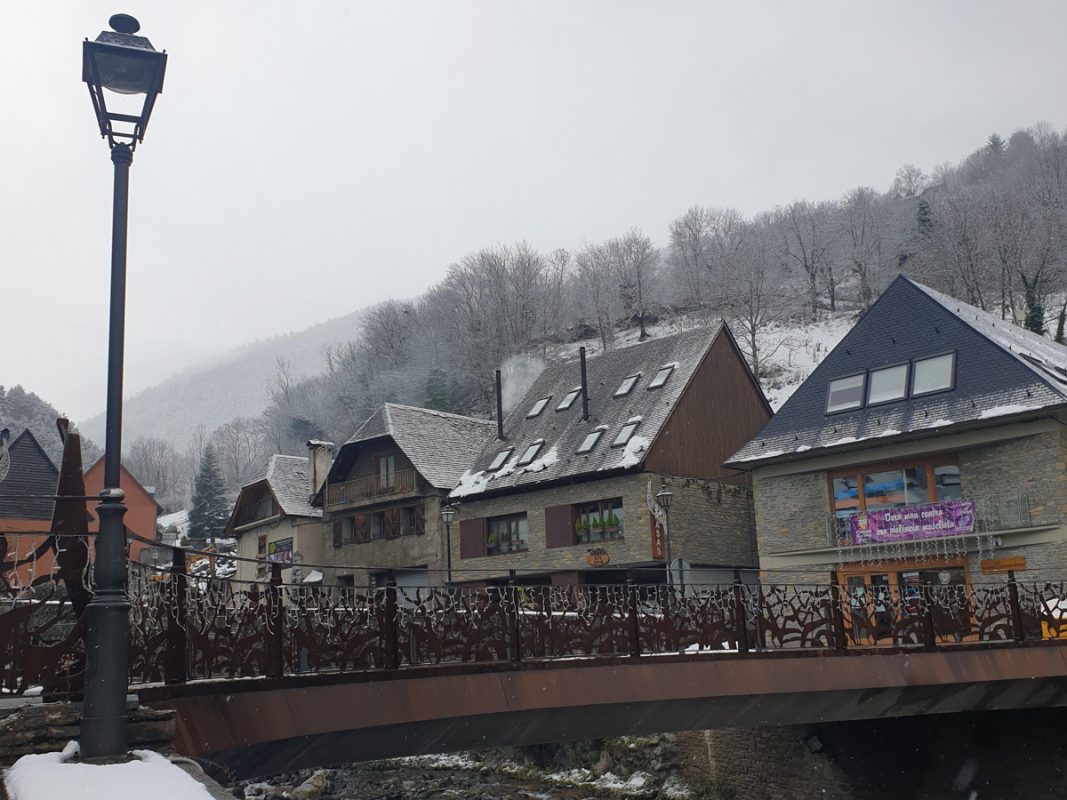
When it comes to where snow falls in Spain, geography is key.
The country’s varied landscape—from mountain ranges to coastal areas— results in a diversity of climatic conditions, making some regions more prone to snow than others.
Let’s break it down by region to get a better grasp.
Pyrenees
These mountain ranges straddle the border between Spain and France – they’re a snow magnet during winter!
Cold winters are common, with heavy snowfall fairly frequent throughout the year.
Baqueira Beret (Spain’s biggest and most popular ski destination) is located in the Pyrenees, and every winter keen skiiers flock to the resort for its snow.
So, from the end of November to late March (sometimes even into April), you can bet you’ll see plenty of the white stuff!
East Coast
Snowfall is very uncommon on the east coast, thanks to the warming influence of the Mediterranean Ocean.
This means that snow in cities like Alicante, Barcelona and Valencia is very rare.
Andalucia

You might be surprised, but Andalucia does get its share of winter snow, despite cities like Malaga and Marbella being very warm even in December!
This is due to the Sierra Nevada mountains, which sit inland from the coastline.
Yes, you can go from lounging on the beach to hitting the slopes in a single day if you time it right!
Central Spain
Regions like Madrid and Castilla-La Mancha experience occasional snowfall.
While not as frequent as in the Pyrenees (in Madrid it snows around every 2-3 years), it happens much more than in coastal areas of Spain!
That said, there are some ski resorts in this part of Spain, including Puerto de Navacerrada, which is 60 km from Madrid.
Western Spain
Areas like Extremadura experience sporadic snowfall, especially in the higher elevation areas, but it’s not known for its snow.
Balearic Islands
Winter in the Balearics is mild, not icy – no snow boots are needed here!
If you’re planning on spending winter in Mallorca or are visiting Menorca on a winter trip, you’ll enjoy gives you the island without the crowds – but also with no snow!
Canary Islands
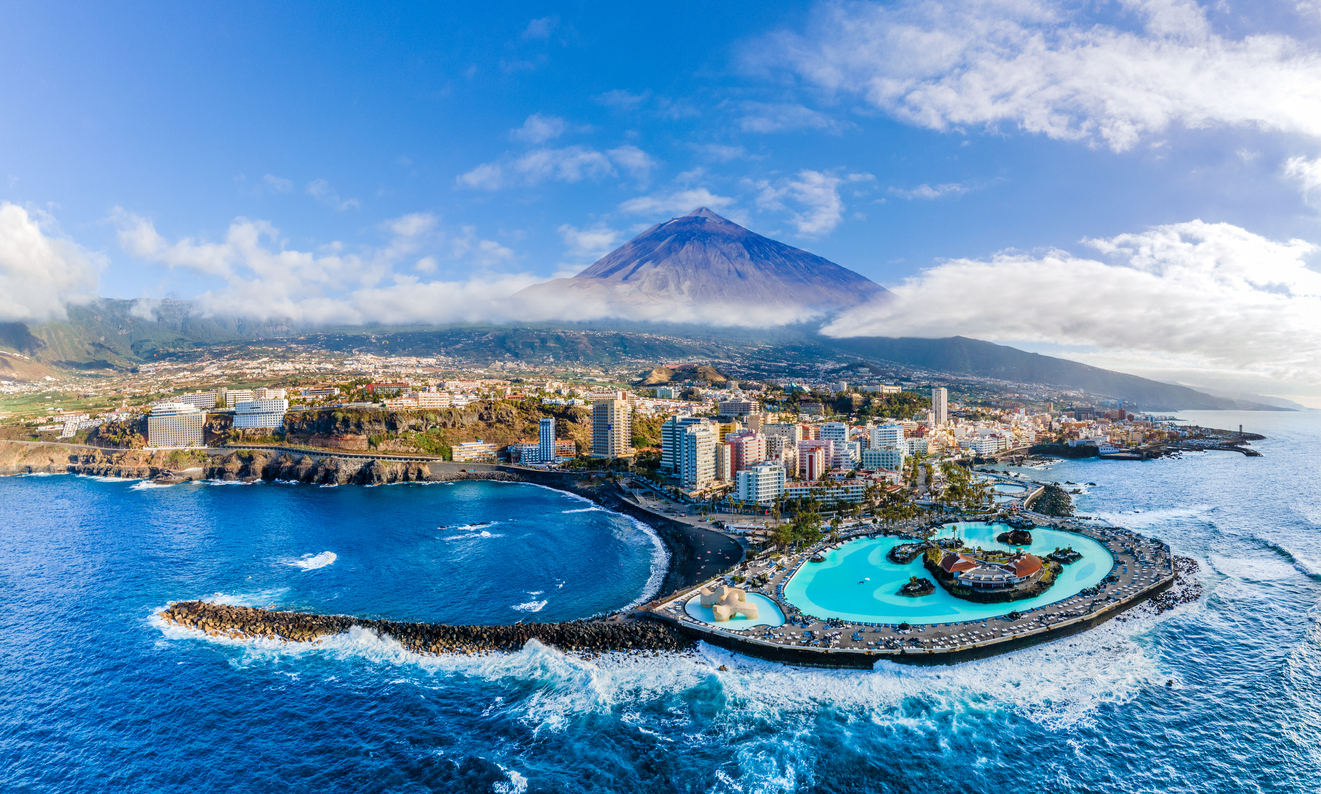
The Canary Islands are the go-to destination for warmth in the winter months.
Known for their mild temperatures, even in the coldest months, these islands offer a sun-soaked refuge from frigid weather.
That said, there are some exceptions this the rule.
If you’re planning a winter trip to Tenerife, the beaches will likely be warm and sunny, but head up to Mount Teide (the tallest peak in Spain!) and you might see some snow.
But a winter vacation in Lanzarote and Gran Canaria offers virtually zero chance of encountering snow!
Does it snow in Madrid?
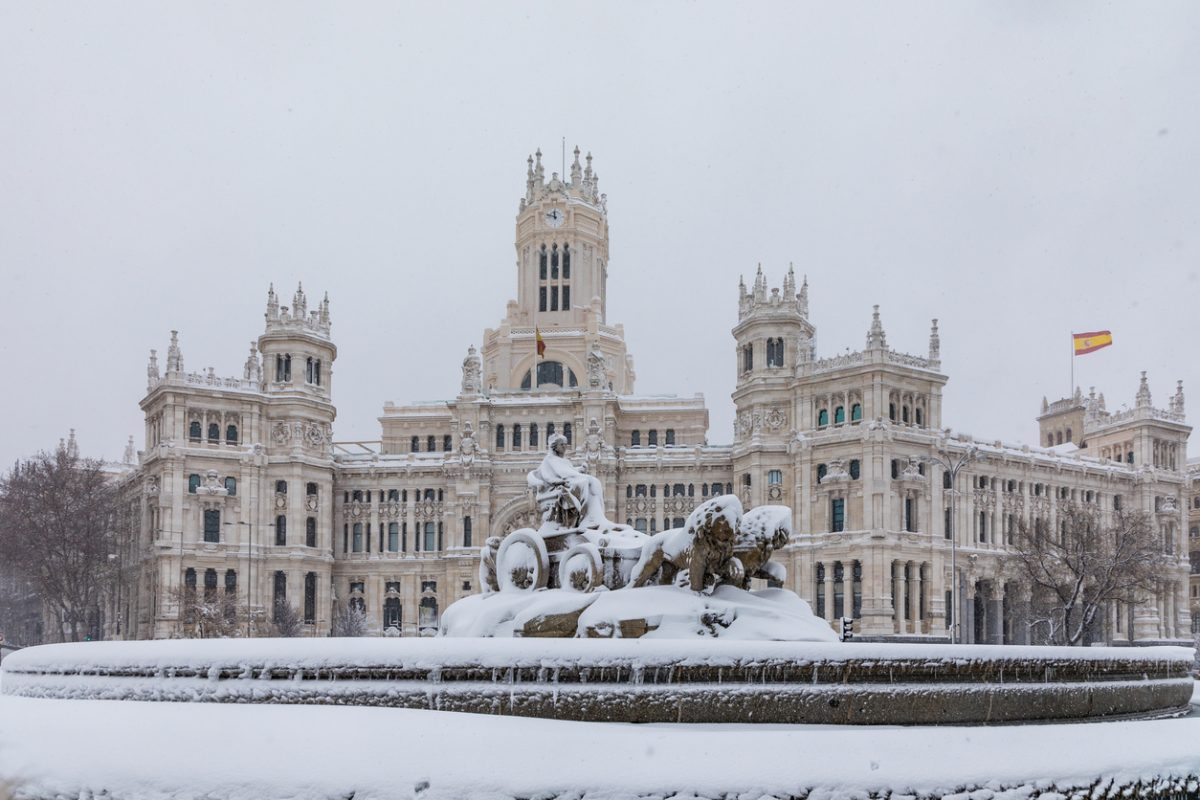
The Spanish capital does see snow, albeit infrequently.
The city’s average winter temperature hovers around 10°C (50°F), but dips in temperature can and do occur.
The higher-altitude areas in the outskirts are more likely to experience snow.
Check out my full article and explainer about snow in Madrid by clicking here.
Does it snow in Barcelona?

Snow in Barcelona is a very rare sight, as the city’s Mediterranean climate leans towards mild winters.
You’re more likely to experience rain than snow; the winter temperature usually stays around 12°C (54°F).
However, the Pyrenees are a couple of hours away and are an excellent destination for winter sports!
Check out my full guide to snow in Barcelona by clicking here.
Does it snow in Valencia?

Dreaming of snow while walking Valencia’s beaches? Dream on!
Snow in Valencia is very rare.
The city enjoys a mild, Mediterranean climate with winter temperatures that rarely go below 10°C (50°F).
While the mountainous areas surrounding Valencia get some winter weather, the city itself is more likely to see rain.
Does it snow in Malaga?
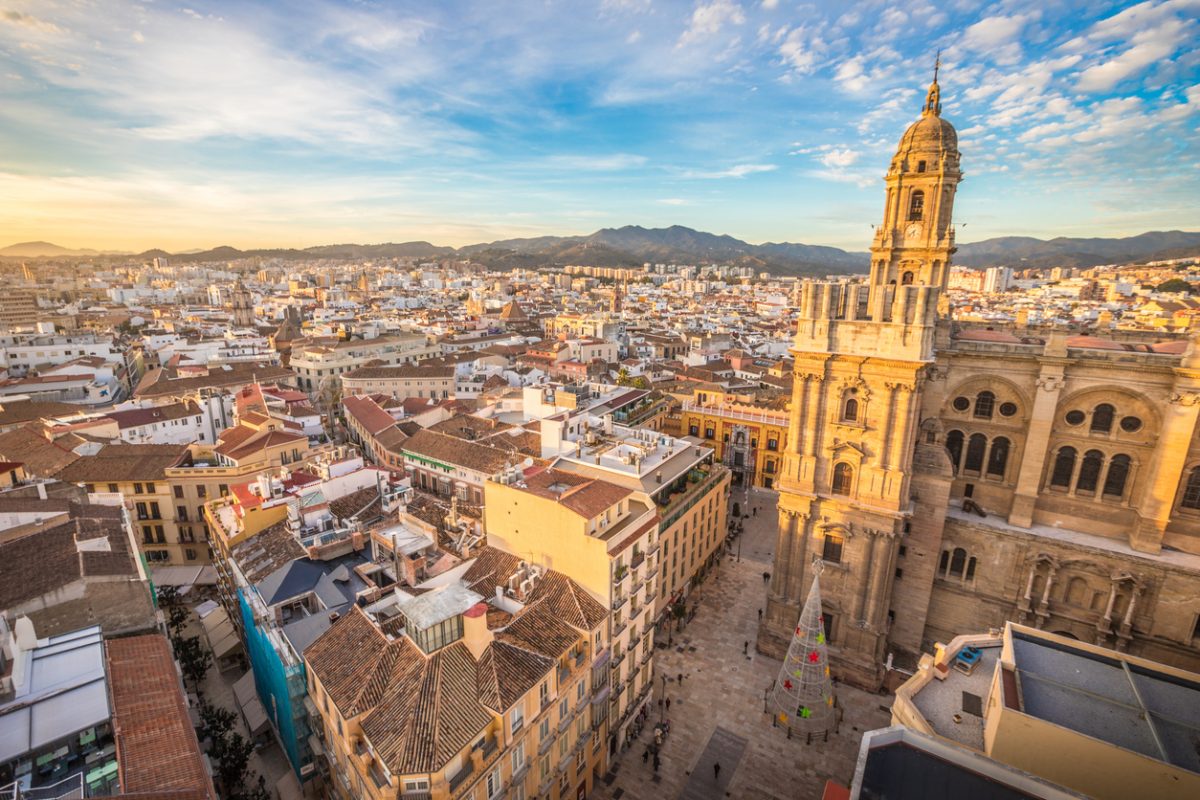
Snow in Malaga? Think again.
Located on Spain’s Costa del Sol, Malaga enjoys mild winters with temperatures generally hovering between 12°C to 18°C (54°F to 64°F).
Snowfall is exceptionally rare in the city and almost non-existent along the coast.
But if snow is a must-have for your winter trip, the Sierra Nevada Mountains aren’t too far away – but Malaga itself is more about winter sun than winter snow!
Check out my full explainer about snow in Malaga by clicking here.
Snowiest cities in Spain
So, what are the snowiest cities in Spain?
Well, you’re most likely to find a beautiful winter wonderland in the Pyrenees, away from the cities, but here are some cities and towns where snow is more frequent:
- Burgos: Located in Castile and León, this city experiences significant snowfall. Its historic sites look ethereal covered in snow.
- Vitoria-Gasteiz: Found in the Basque Country, the city sees a fair amount of snow, transforming the cityscape when it does.
- Pamplona: Known for its running of the bulls, snowfall is also common here, giving the city a tranquil, picturesque look.
- Soria: Also in Castile and León, snowfall during winter is frequent, presenting a city clad in white.
- Teruel: Situated in Aragon, Teruel gets substantial snowfall, ideal for experiencing a Spanish winter.
- Ávila: This walled city in Castile and León sees a generous amount of snowfall. The medieval walls blanketed in snow offer a unique winter experience.
Best ski resorts in Spain
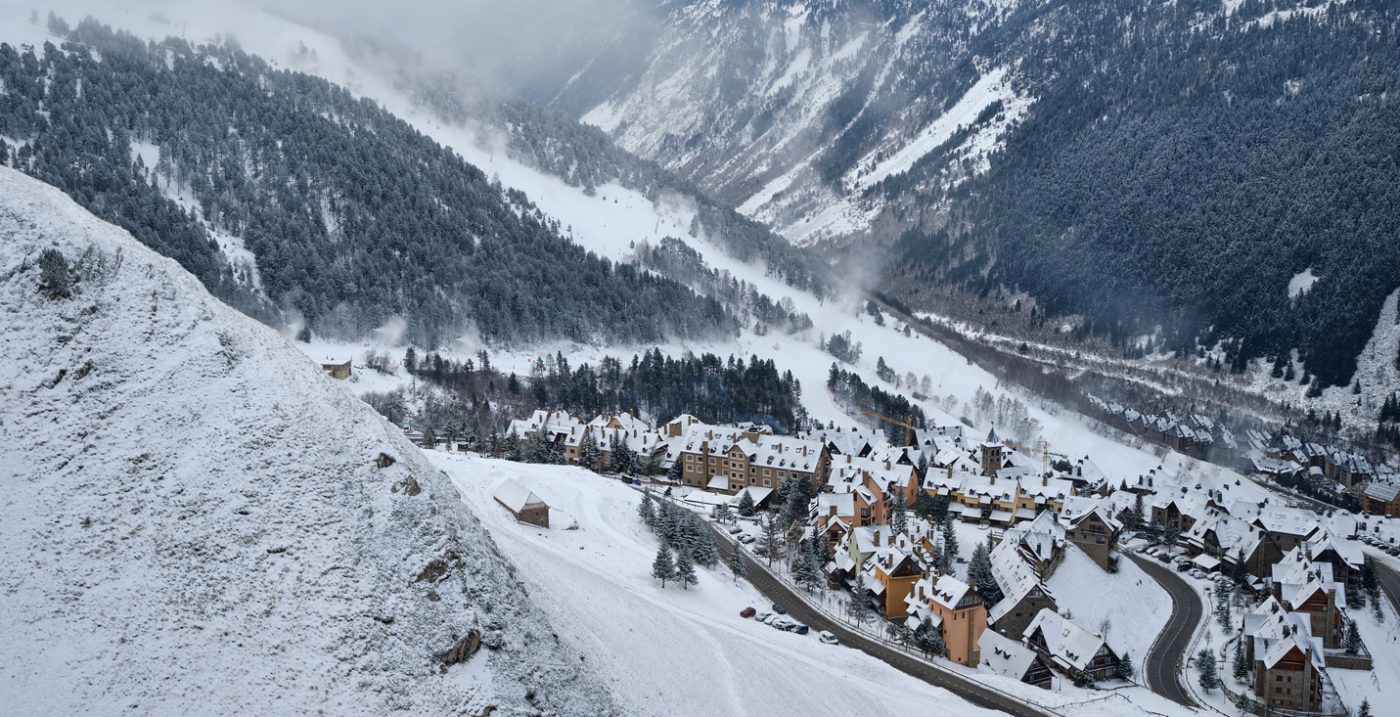
If you’re seeking out snow in Spain, head away from its beautiful beaches and towards its ski resorts! Here are some of the best:
Baqueira-Beret
Located in the Pyrenees, Baqueira-Beret is the largest and one of the most popular ski resorts in Spain.
With an elevation reaching up to 2,510 meters on the tallest mountain, this resort offers a range of slopes suitable for all skill levels.
If you’re staying in Barcelona, it’s about a 4-hour drive to get here.
I’d highly recommend spending some time in Vielha too; it’s a gorgeous winter destination! Don’t miss the wonderful spa in Les, ideal for winter.
Sierra Nevada
Tucked away in the province of Granada in Southern Spain, Sierra Nevada is a popular skiing destination.
In fact, it boasts the southernmost ski resort in Europe – it’s not too far from the Costa del Sol!
This means that you can ski on snow-covered slopes in the morning and enjoy Mediterranean beaches in the afternoon.
The resort features slopes that cater to beginners and experts alike, with an elevation of up to 3,300 meters.
Formigal-Panticosa
This resort is also in the Pyrenees, in the region of Aragon.
With over 176 kilometers of marked pistes, it’s a sizable area to explore.
The resort is family-friendly and offers a variety of winter activities besides skiing, like snowshoeing and snowmobiling.
La Molina
Situated in the Catalan Pyrenees, La Molina is one of Spain’s oldest ski resorts.
Though it’s smaller than Baqueira-Beret or Sierra Nevada, it’s an excellent option for families and those new to winter sports.
It’s also easily accessible from Barcelona.
Tips for visiting Spain in the snow
Whether you’re exploring the Pyrenees or have encountered some surprising snow elsewhere in Spain, here are some tips for making the most of the country in freezing conditions!
- Weather Forecasts: Check reliable weather websites like AEMET (Spanish Meteorological Agency) for real-time updates on snowfall.
- Road Conditions: Consult the Directorate-General for Traffic (DGT) website for road closures and driving conditions.
- Public Transport: Be aware that snow can disrupt trains and buses. Always have a backup plan.
- Winter Tires: If driving, consider equipping your car with winter tires for improved grip. In certain areas, they are mandatory.
- Dress Appropriately: Layers are key. Opt for moisture-wicking base layers and water-resistant outer layers.
- Footwear: Waterproof boots with good traction are a must for walking in snowy conditions.
FAQs about snow in Spain
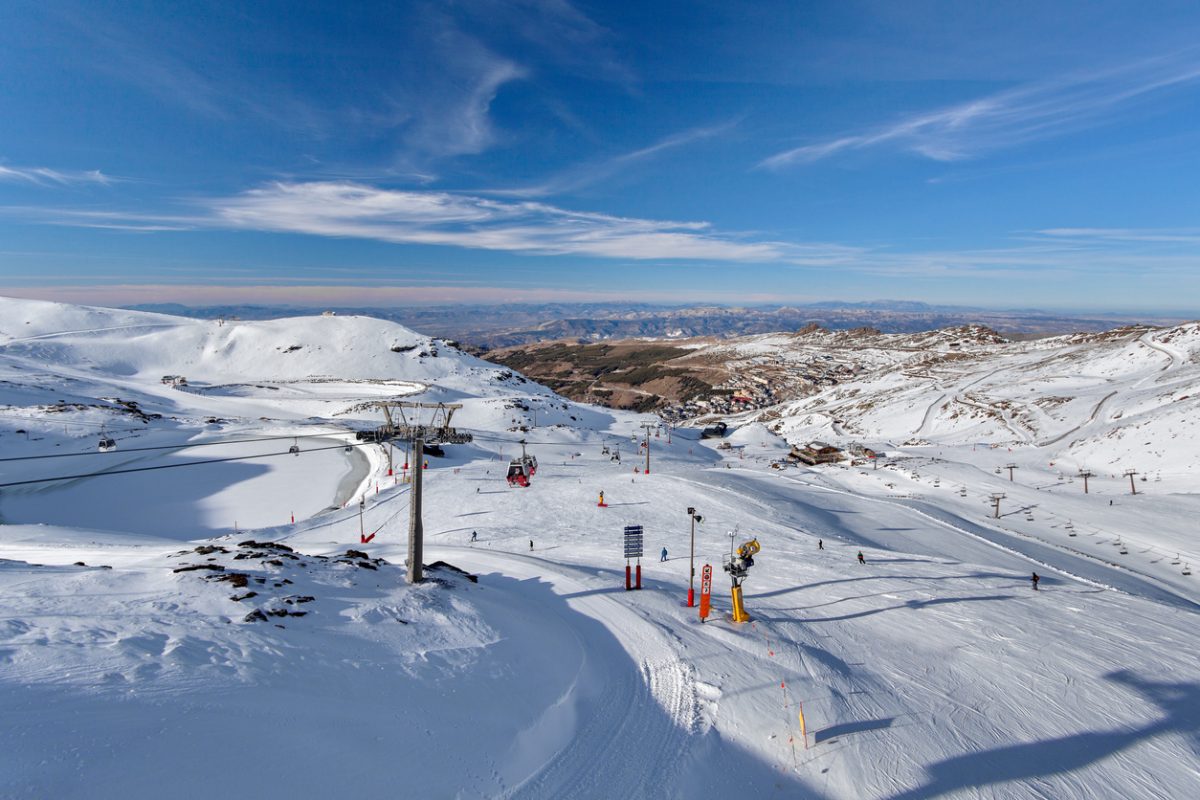
Here are some answers to frequently asked questions about snowfall in Spain:
Which part of Spain has snow?
In Spain, you’re most likely to encounter snow in the Pyrenees, Sierra Nevada, and certain parts of Central Spain.
These regions have a higher elevation, making them colder and more prone to snowfall.
Does Spain get any snow?
Yes, Spain does experience snowfall, primarily in the mountains – the most famous being the Pyrenees and Sierra Nevada.
Even some parts of Central Spain can see occasional snow during the winter months.
Has it ever snowed in Malaga?
While it’s extremely rare, Malaga has experienced snowfall in the past.
That said, the most recent notable event was in 1954, so don’t count on making a snowman on the Costa del Sol!
Where is the best place to see snow in Spain?
For consistent and quality snow, your best bet is the Pyrenees or the Sierra Nevada mountains.
These regions have ski resorts and a range of winter activities.
Does it snow in Alicante, Spain?
Snowfall in Alicante is a rare occurrence.
This is because the city has a Mediterranean climate, which isn’t typically snowy.
If it does snow, it’s generally a light dusting that melts quickly.
Does Mallorca get snow?
Snowfall in Mallorca is infrequent but possible, mainly in the mountainous areas like the Serra de Tramuntana. In fact, it happened in February 2023!
Does Spain get snow in December?
While December isn’t the peak of Spain’s snow season, some regions, especially those with higher altitudes like the Pyrenees, may see some snowfall as cold temperatures begin to set in.
When did it last snow in Spain?
The most recent notable snow event in Spain was in January 2021, when Storm Filomena blanketed parts of the country, including Madrid, in snow.
Does Spain have any ski resorts?
Yes, Spain is home to several ski resorts, particularly in the Pyrenees, which straddles the border with France and Sierra Nevada in Andalucia.
So, does it snow in Spain?
It certainly can snow in Spain – but you’ll have to venture away from the coast and into the mountainous areas to have any real chance of seeing it.
However, it’s a real possibility in some cities, and in the Pyrenees, winter revolves around snow!
